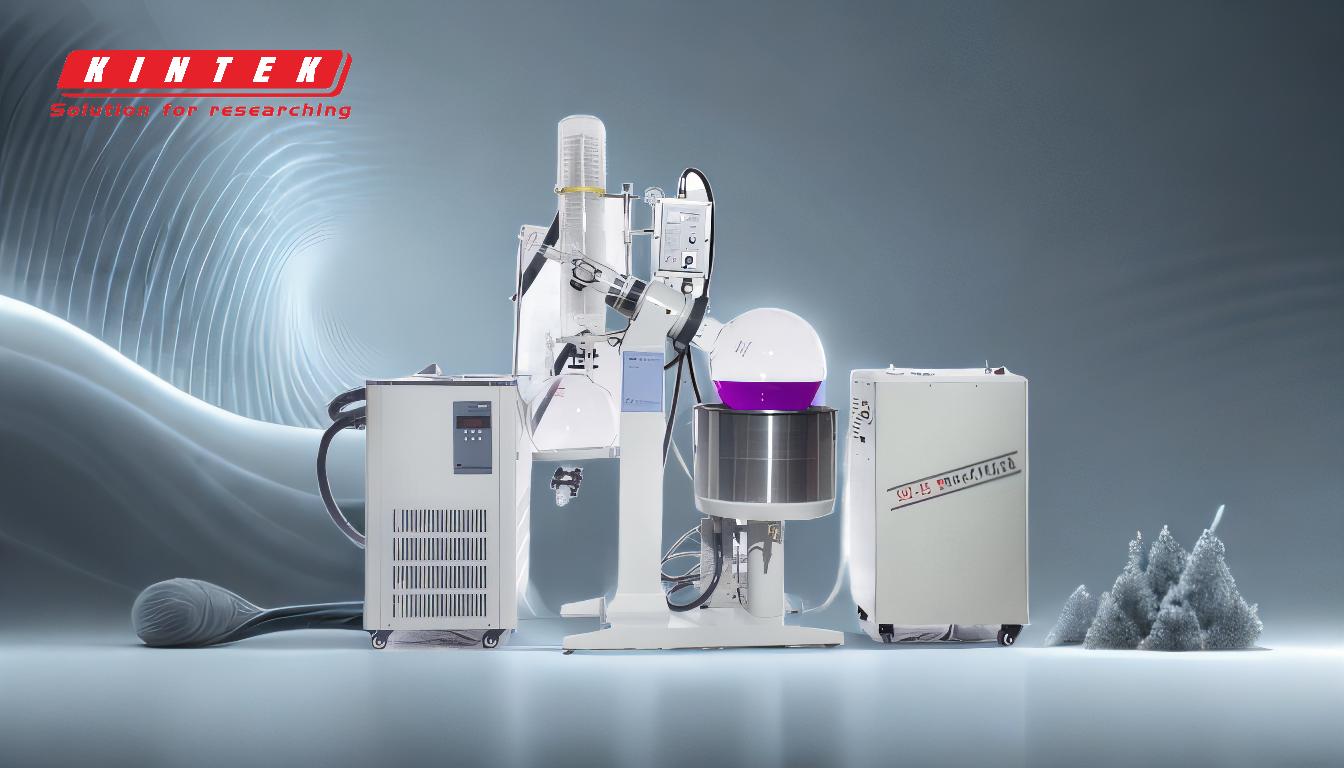Rotary evaporation is primarily used for the removal of solvents from samples, rather than purification. It is a technique that leverages reduced pressure and elevated temperature to evaporate solvents efficiently, leaving behind the desired compounds. While it is not a purification method itself, it can be a preparatory step in purification processes by isolating compounds from solvents. The technique is widely used in laboratories for distillation, solvent recovery, and concentration, making it a critical tool in fields like chemistry, pharmaceuticals, and food science.
Key Points Explained:

-
Primary Function of Rotary Evaporation:
- Rotary evaporation is designed to remove solvents from samples by evaporating them under reduced pressure and controlled temperature. This process is particularly effective for solvents with high boiling points, as it prevents thermal degradation or unwanted side reactions that could occur at higher temperatures.
-
Mechanism of Rotary Evaporation:
- The sample is distributed as a thin film inside a rotating flask, which increases the surface area for evaporation. The combination of reduced pressure (vacuum) and gentle heating accelerates the evaporation process, allowing solvents to be removed quickly and efficiently.
-
Role in Purification Processes:
- While rotary evaporation itself is not a purification technique, it is often a critical step in purification workflows. For example, after a chemical reaction, the desired product may be dissolved in a solvent. Rotary evaporation can be used to remove the solvent, leaving behind the product in a concentrated or solid form, which can then be further purified using other methods like chromatography or recrystallization.
-
Applications in Various Fields:
- Rotary evaporation is widely used in organic, inorganic, and polymer chemistry laboratories. It is also essential in pharmaceutical, biological, and food industries for processes such as solvent recovery, concentration of extracts, and preparation of samples for further analysis or purification.
-
Advantages Over Other Methods:
- Rotary evaporation is preferred for its ability to remove solvents gently and efficiently, minimizing the risk of damaging heat-sensitive compounds. It is also scalable, making it suitable for both small-scale laboratory experiments and larger industrial applications.
-
Limitations in Purification:
- Rotary evaporation does not separate compounds from one another; it only removes solvents. For purification, additional techniques such as distillation, chromatography, or crystallization are required to isolate and refine the desired compounds.
-
Common Use Cases:
- In organic synthesis, rotary evaporation is used to isolate reaction products by removing reaction solvents.
- In natural product extraction, it is used to concentrate plant extracts by evaporating extraction solvents like ethanol or methanol.
- In pharmaceutical manufacturing, it is employed to recover solvents from drug formulations or to concentrate active pharmaceutical ingredients (APIs).
In summary, rotary evaporation is a vital tool for solvent removal and sample preparation but is not a purification method on its own. Its role in purification workflows is to concentrate or isolate compounds, which can then be further purified using other techniques.
Summary Table:
| Aspect | Details |
|---|---|
| Primary Function | Removes solvents under reduced pressure and controlled temperature. |
| Mechanism | Thin film in rotating flask increases surface area for faster evaporation. |
| Role in Purification | Prepares samples by isolating compounds; requires additional purification. |
| Applications | Chemistry, pharmaceuticals, food science, and natural product extraction. |
| Advantages | Gentle solvent removal, scalable, and minimizes thermal degradation. |
| Limitations | Does not separate compounds; only removes solvents. |
| Common Use Cases | Organic synthesis, solvent recovery, and API concentration. |
Learn how rotary evaporation can streamline your lab processes—contact us today!










